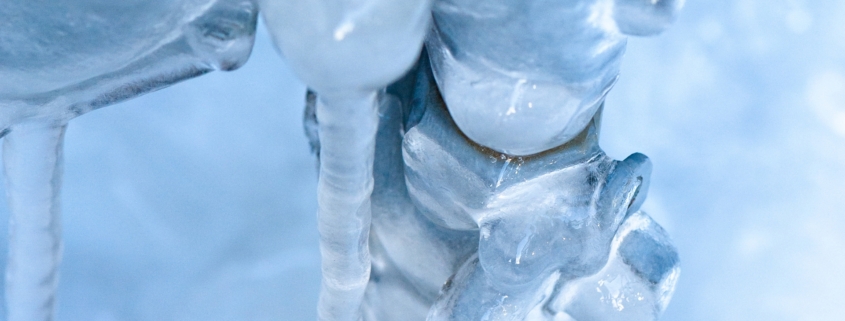What to Do when You Have Frozen Pipes During a Weather Event
If your pipes have frozen, immediately turn off the water at the main shutoff valve. This is usually found at the water meter. A lot of people think that when pipes “burst” there is a giant water event which floods the entire house. However, the pipe may not actually burst and gush water, but form micro leaks at a joint, or create a small crack that may also simply drip water. Inspect all pipes you can see and check for leaks or drips. Slow leaks can be very problematic because by the time they are discovered, significant damage may have occurred. In addition, check the exterior of your property and look for any signs of water on the slab.
Once a weather event has passed, if you are concerned about microcracks in your plumbing, contact a plumber to do a pressure test to see if you are losing pressure. If pressure loss is detected, get the repairs scheduled as quickly as possible. After a major freezing weather event, plumbers may be booked up quickly.
If you have experienced a major water event, keep in mind that the remediation companies may also be booked 1-2 weeks out before they can get to you. This is plenty of time for mold growth to occur. Some molds only need about 48 hours to establish themselves. Therefore, time is of the essence.
Early leak detection
At this point, you need to be proactive. Remove any carpeting and padding ASAP because this wet material cannot be salvaged. Also, remove the baseboards from any walls that are wet. This will help the Sheetrock dry out. If you were home and caught the leak, use towels or a Shop-Vac to extract the water. Next, put fans on all the wet materials. The fans will help dry surface moisture and are useful if you caught the leak quickly. If you can get a dehumidifier, use that. The tiny dehumidifiers are better than nothing, but just barely. If you can rent an industrial dehumidifier that would be preferable but use what you have. If you can build an enclosure around the wet materials, the dry out process will go much faster. Otherwise, you will be trying to dehumidify the entire house.
Delayed leak detection
If a leak remained undetected, water will have enough time to saturate the materials and removal will be your only recourse. If water impacted any cabinets, those should be removed as well. Water will wick up the particle board supports that sit on the floor and you will have mold growing on the underside of the cabinet base and possibly the wall materials behind the cabinet. If you act quickly, the cabinets can possibly be dried out and saved.
Ongoing leak or long-standing water
If you have had water standing for several days, it is best to stop and seek professional help. Mold growth will likely have occurred by this point, and tearing out materials can sometimes do more harm than good. However, I’d recommend getting your keepsakes and valuables out ASAP. The longer things sit in that environment, the higher the probability mold growth will occur.
If you are concerned about mold growth, seek out a licensed or qualified professional for a consultation. The Indoor Air Quality Association (IAQA) website has a ‘Find A Pro’ link to help locate professionals in your area.




Leave a Reply
Want to join the discussion?Feel free to contribute!